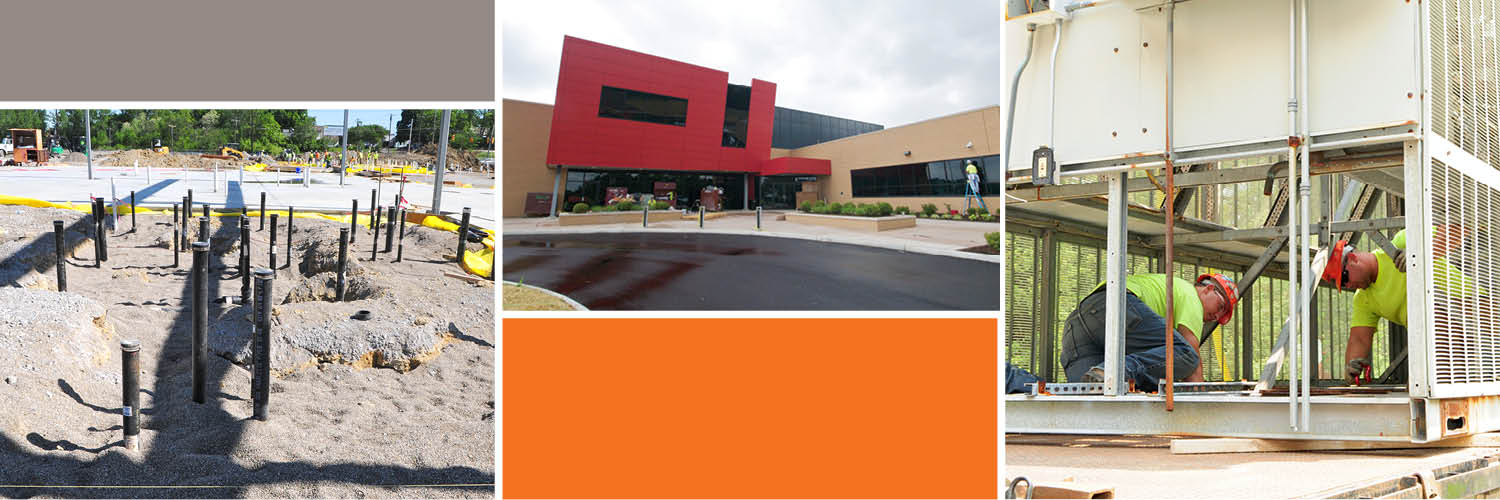At TP Mechanical, we understand that mechanical systems can be the cause of costly ongoing building operation expenditures if they’re not well-planned and properly configured.
As a customer-driven, solutions-oriented organization, our experienced team of mechanical designers and engineers are committed to more than just fulfilling the specifications and requirements of your project. We provide comprehensive, end-to-end solutions for you, from pre-construction expertise through contracting and fabrication to the service and maintenance of your mechanical systems.
The Design Build and Design Assist difference
When you choose to use our Design Build approach, TP Mechanical handles the mechanical engineering – HVAC, fire protection and plumbing – from start to finish. We provide budgeting, cost-estimating and proposal services, system design and expert construction. Combined with our state-of-the-art fabrication process and efficient installation services, we ensure that your project will be cost-effective and on-time.
If you’re already working with outside engineering and architecture firms, you can still get the TP Mechanical advantage by utilizing our Design Assist program. We provide services in both system designs and constructability by applying our experience and expertise in construction. The result: A completed project with a reduced budget and streamlined timeline.
Using Design Build and Design Assist means:
- Faster delivery to market
- Reduced costs via system design and constructability
- Enhanced coordination of integrated teams of experienced mechanical system experts
- Minimized project risk
- More efficient installs with state-of-the-art fabrication capabilities
- Energy-efficient systems incorporated into designs
Innovation, expertise and excellence
Our Design Build and Design Assist teams are comprised of engineers skilled at applying speed-to-market and cost-effective mechanical engineering principles to create custom, innovative project plans that protect your interests, optimize your budget, streamline your timeline, and overcome your challenges and obstacles to meet your specific business needs. Our engineers can also apply Leadership in Energy and Environmental Design (LEED) principles to improve the energy efficiency of the project.
“We deliver the whole package when we pair our Design Build and Design Assist services with state-of-the-art fabrication capabilities,” said Matt Anderson, business development leader for TP Mechanical. “The end result is that our clients have a building that delivers outstanding performance through the entire construction process and in day-to- day operations.”
To learn more about our Design Build and Design Assist Services visit:


 Ali started with TP Mechanical over a year ago as our Customer Relationship Manager in the Columbus region. Ali’s primary responsibility is to build stronger relationships with our customers.
Ali started with TP Mechanical over a year ago as our Customer Relationship Manager in the Columbus region. Ali’s primary responsibility is to build stronger relationships with our customers.
 There were 7,415 heat-related deaths in the United States from 1999 to 2010, according to the Centers for Disease Control and Prevention (CDC). These preventable deaths illustrate how important preparation is during extreme temperatures. Whether you are swimming at the beach or lounging in the park, you should be prepared for extreme heat conditions.
There were 7,415 heat-related deaths in the United States from 1999 to 2010, according to the Centers for Disease Control and Prevention (CDC). These preventable deaths illustrate how important preparation is during extreme temperatures. Whether you are swimming at the beach or lounging in the park, you should be prepared for extreme heat conditions. Fireworks are a staple at festivities for many Americans during the summer months. Unfortunately, many people do not realize just how dangerous fireworks and sparklers can be—which is a primary reason that injuries occur.
Fireworks are a staple at festivities for many Americans during the summer months. Unfortunately, many people do not realize just how dangerous fireworks and sparklers can be—which is a primary reason that injuries occur.
 At TP Mechanical, we want the success of our employees to go hand in hand with the success of the company. That’s why we offer a variety of four-year apprenticeship opportunities that blend in-class instruction and on-site job training.
At TP Mechanical, we want the success of our employees to go hand in hand with the success of the company. That’s why we offer a variety of four-year apprenticeship opportunities that blend in-class instruction and on-site job training. We look forward to meeting you and starting the application process – click on the links above for our office addresses.
We look forward to meeting you and starting the application process – click on the links above for our office addresses.